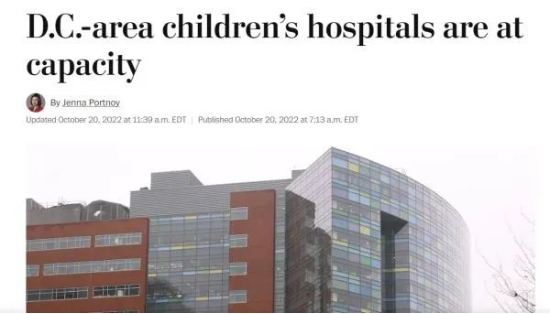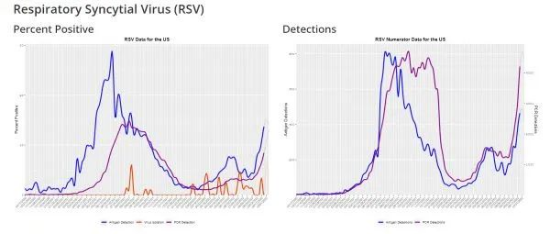According to reports from multiple US media, respiratory syncytial virus (RSV) is spreading at abnormally high levels among children in the United States, overwhelming children's hospitals. Several children's hospitals said they have been "flooded" with patients, and a doctor at Connecticut Children's Hospital said that in his 25 years of work, he had never seen such a surge in RSV-infected patients entering the hospital.

(Source: The Washington Post)
RSV is a common respiratory virus. About 70% of children are infected with RSV within the first year after birth, and almost 100% of children are infected with RSV before the age of two [1]. Symptoms after infection are usually mild and look like a common cold, including runny nose, loss of appetite, cough, sneezing, fever, etc. Symptoms usually last for one to two weeks and can be eliminated by resting and drinking water. However, for some children, especially young infants, RSV can cause dehydration, difficulty breathing, and more serious illnesses such as bronchiolitis or pneumonia.
Data show that RSV is an important viral pathogen that causes acute lower respiratory tract infections (ALRTI) in children under 5 years of age worldwide. In 2019, 3.6 million RSV-related ALRTIs required hospitalization worldwide, and the incidence of RSV-related deaths in children aged 28 days to 6 months was 3.6% [2]. Severe RSV infection can not only cause dysfunction of multiple tissues and organs throughout the body [3], but is also closely related to repeated wheezing and asthma in infants and young children in the late stages of infection [4].

(Source: U.S. Centers for Disease Control and Prevention)
Reference:
[1]HuM, BogoyevitchMA, JansDA. Impact of respiratory syncytial virus infection on host functions: implications for antiviral strategies[J]. Physiol Rev, 2020, 100(4):1527-1594. DOI: 10.1152/physrev.00030.2019.
[2]LiY, WangX, BlauDM, et al. Global, regional, and national disease burden estimates of acute lower respiratory infections due to respiratory syncytial virus in children younger than 5 years in 2019: a systematic analysis[J]. Lancet, 2022, 399(10340): 2047-2064. DOI: 10.1016/s0140-6736(22)00478-0.
[3]EisenhutM. Extrapulmonary manifestations of severe respiratory syncytial virus infection--a systematic review[J]. Crit Care, 2006, 10(4):R107. DOI: 10.1186/cc4984.
[4]RestoriKH, SrinivasaBT, WardBJ, et al. Neonatal immunity, respiratory virus infections, and the development of asthma[J]. Front Immunol, 2018, 9:1249. DOI: 10.3389/fimmu.2018.01249.